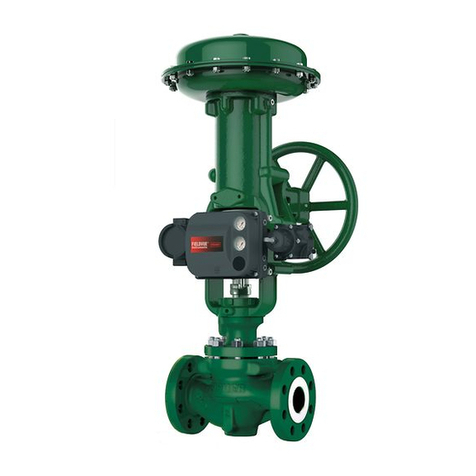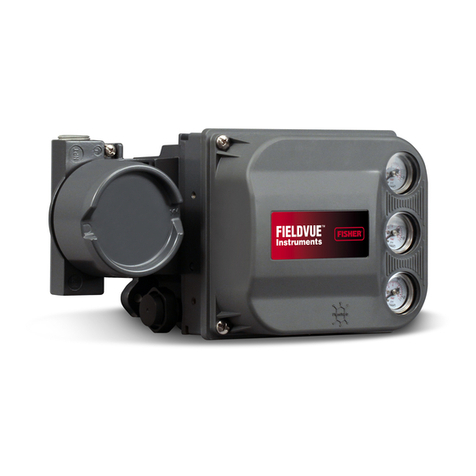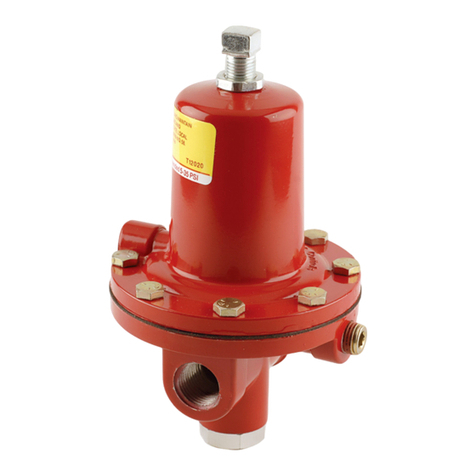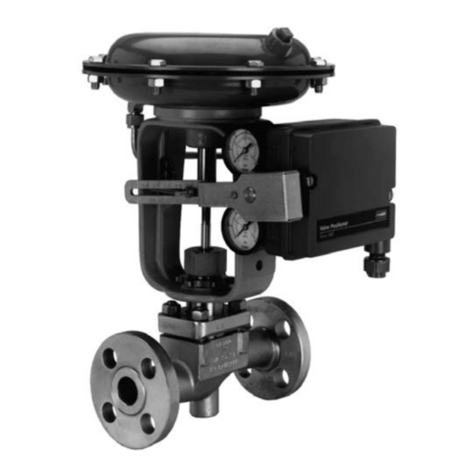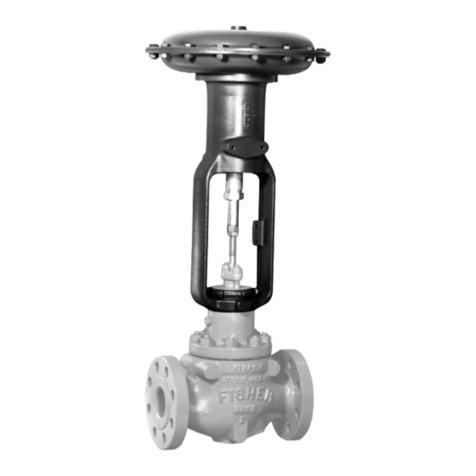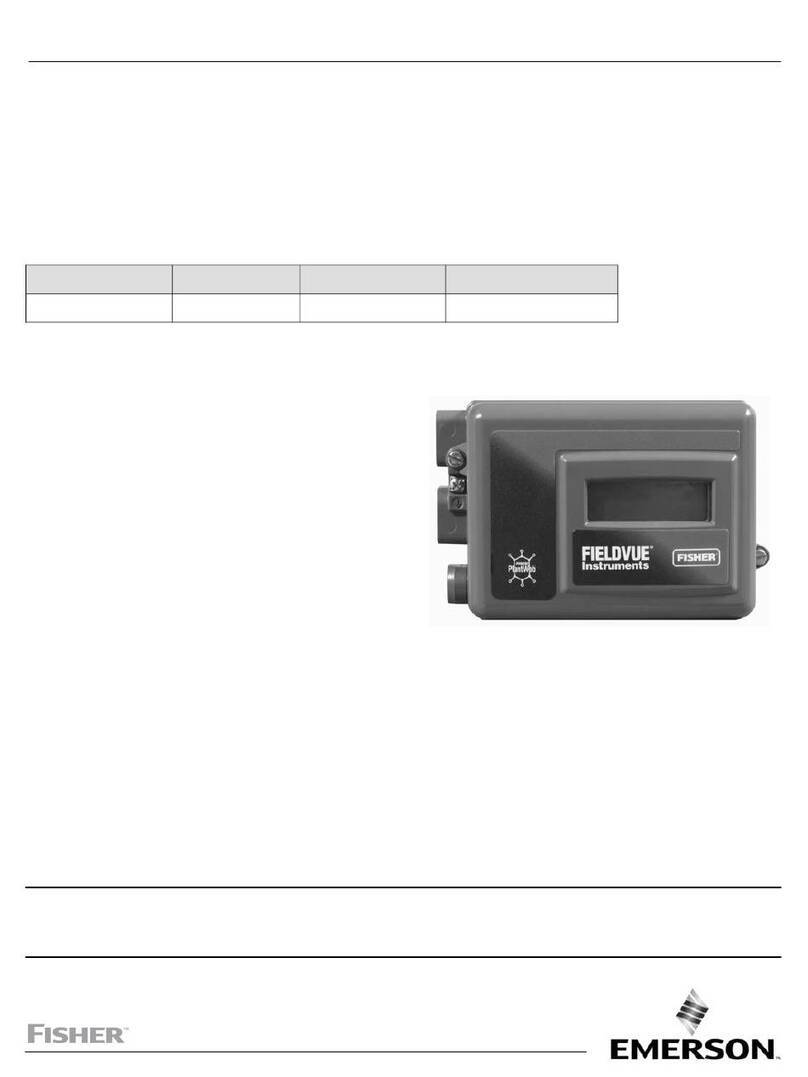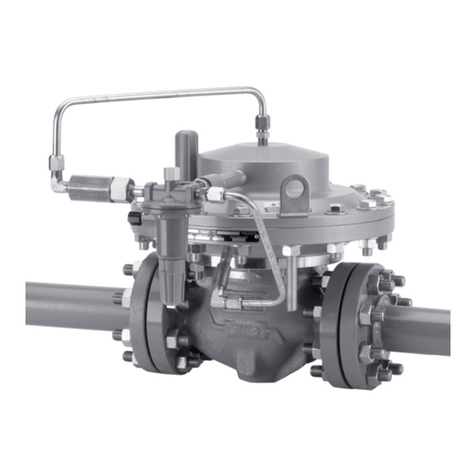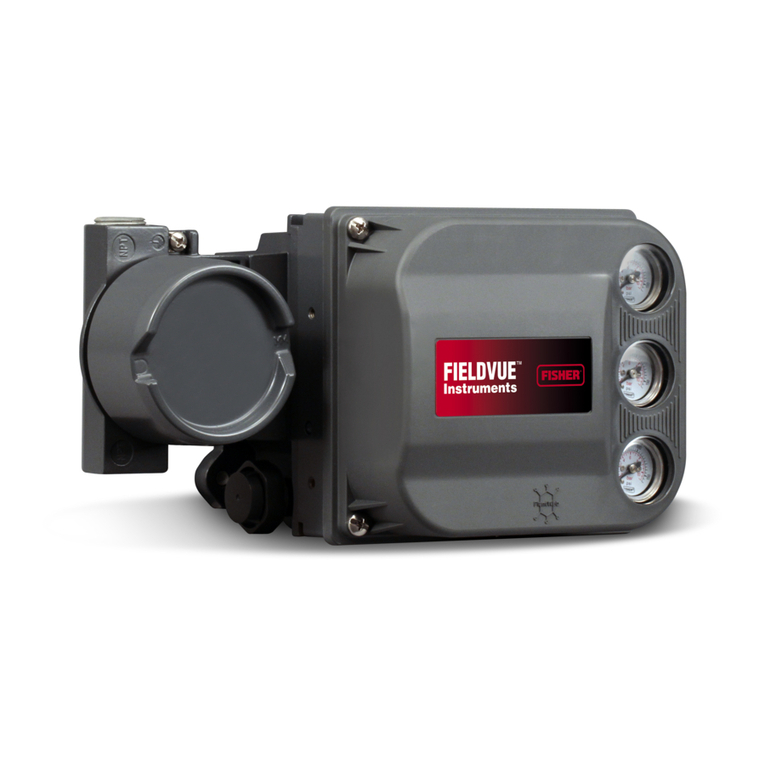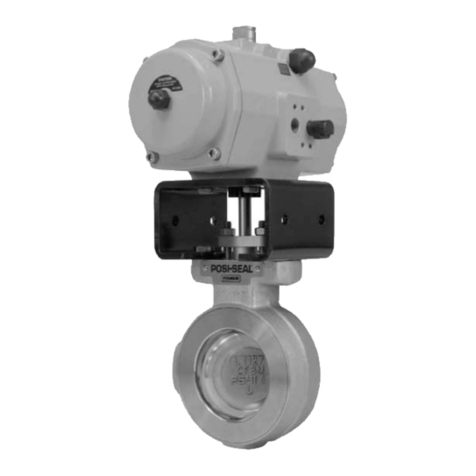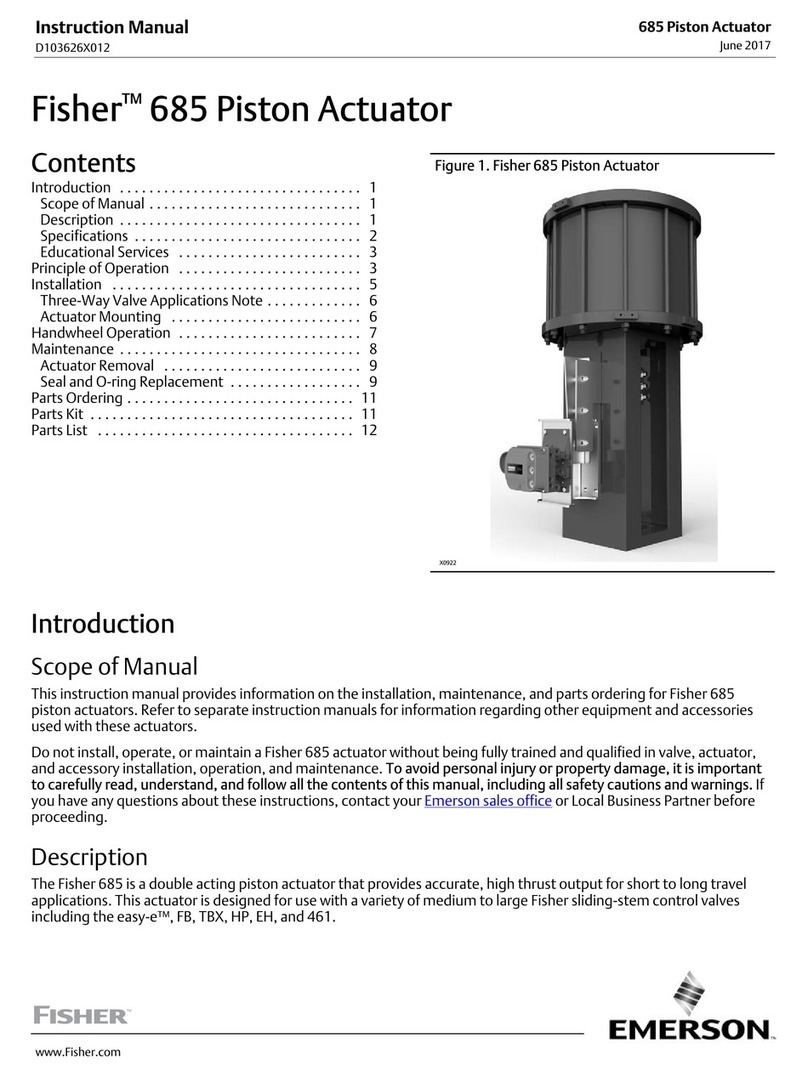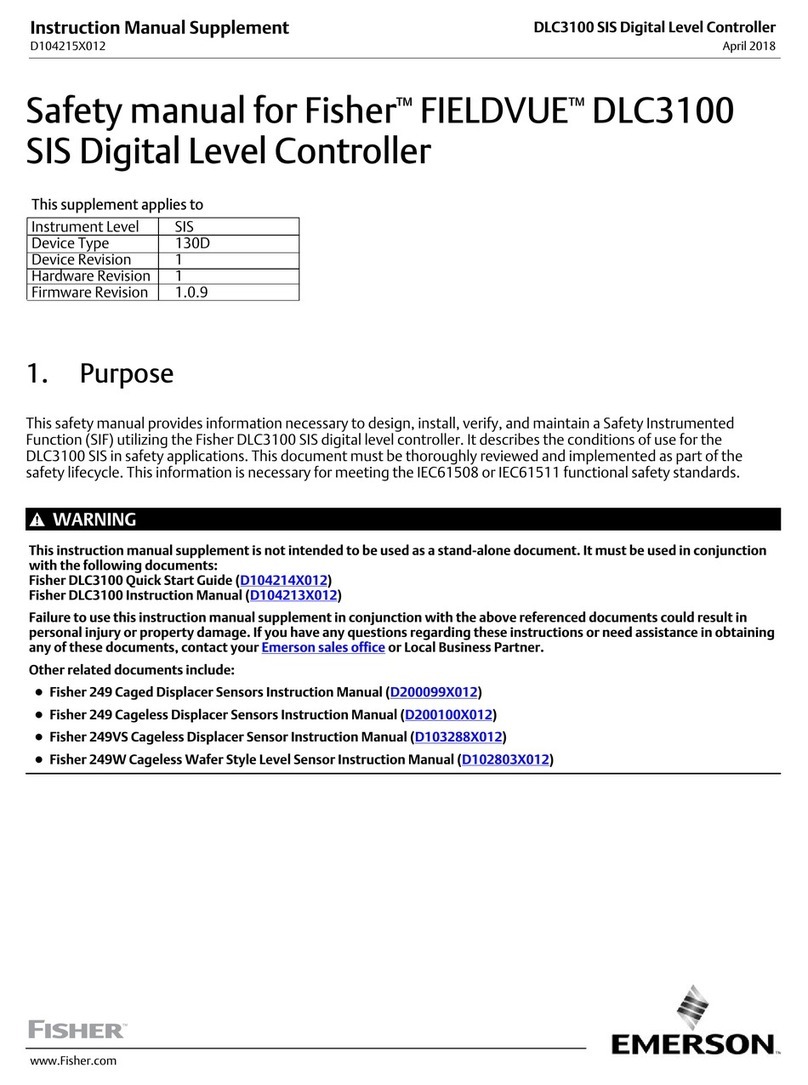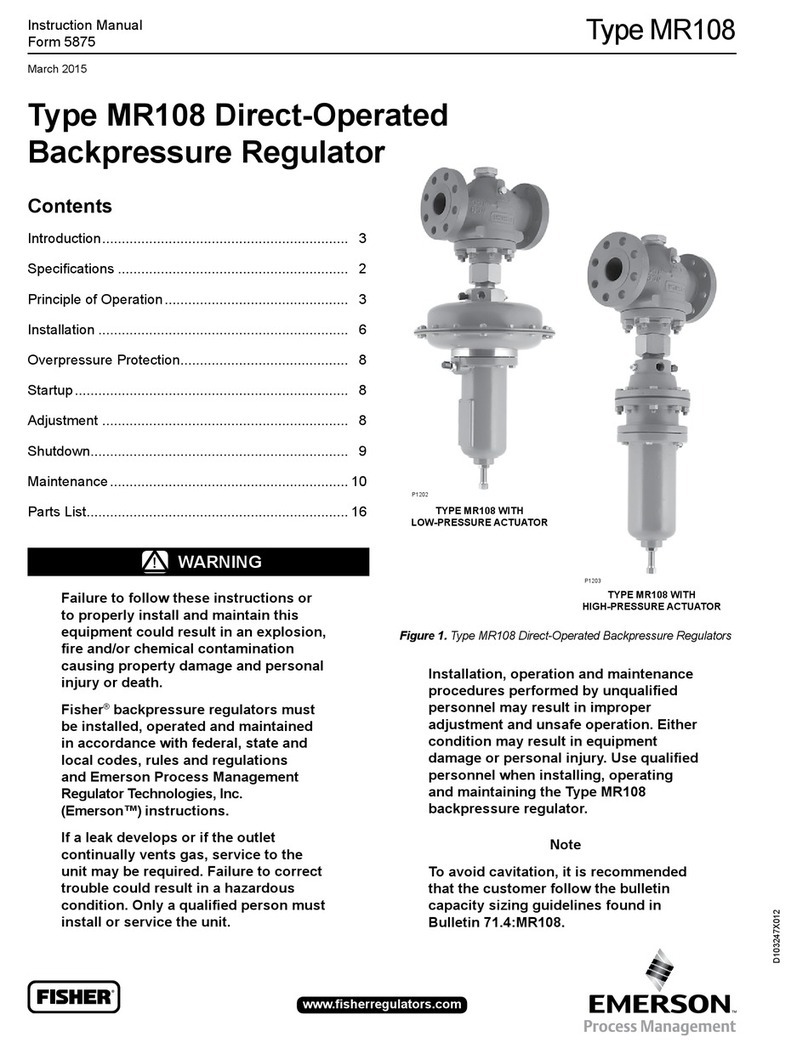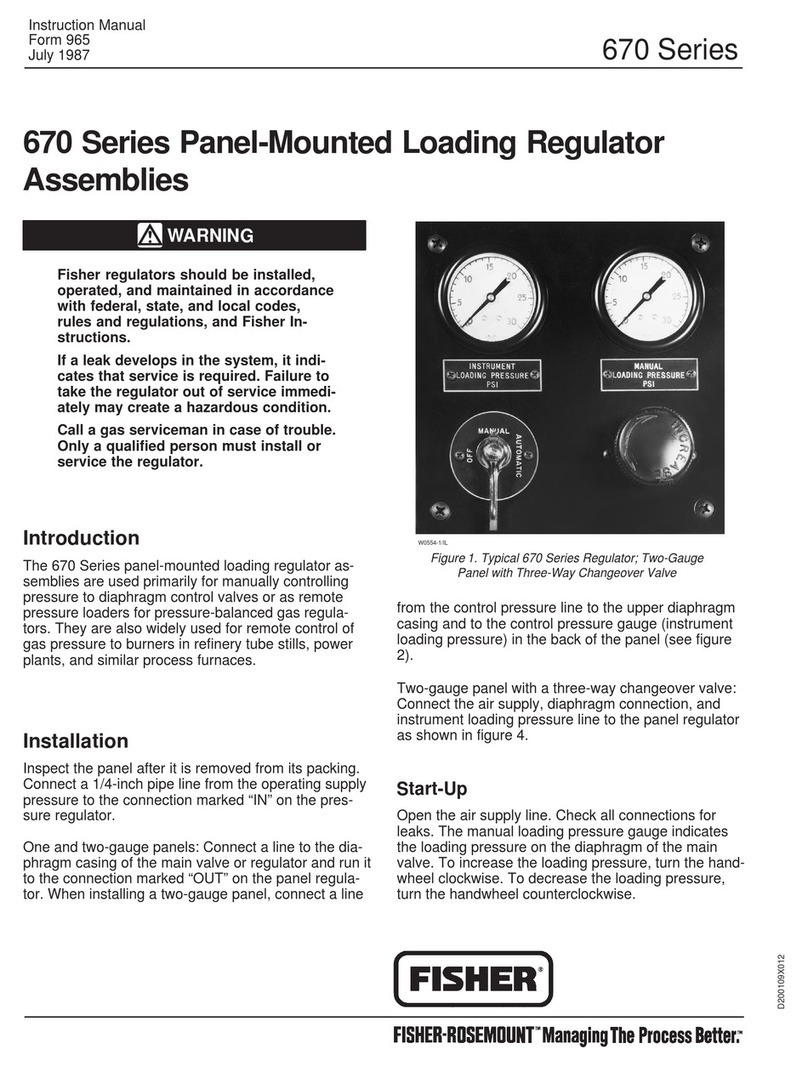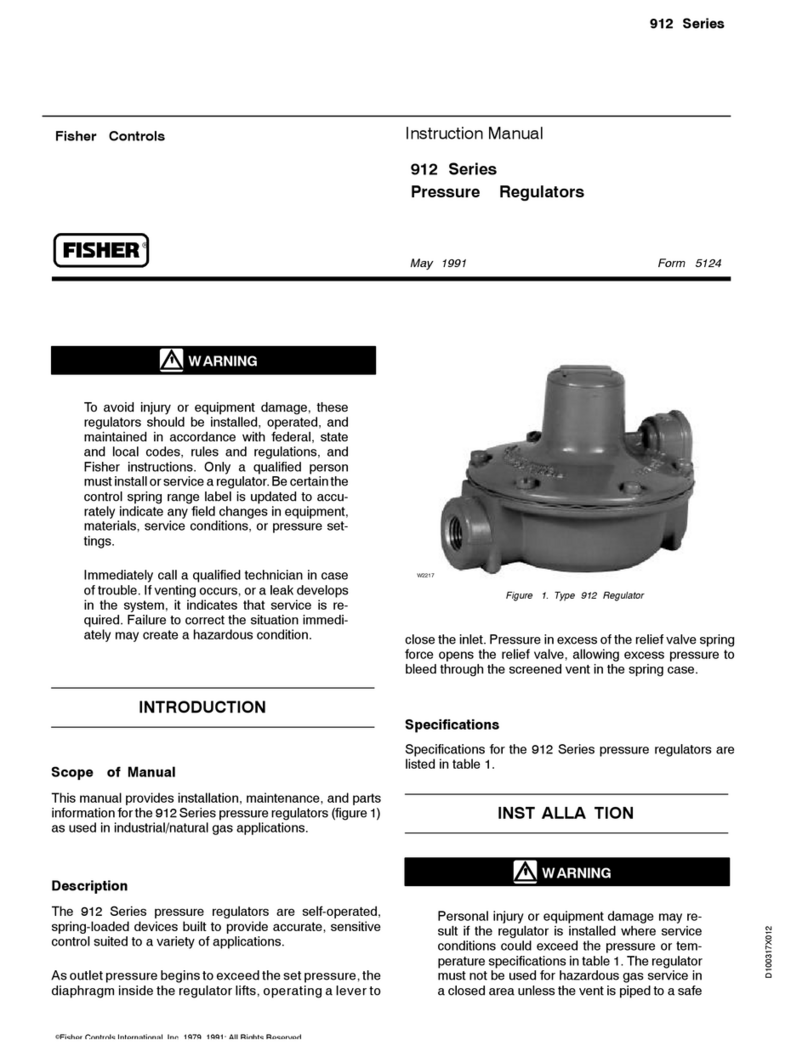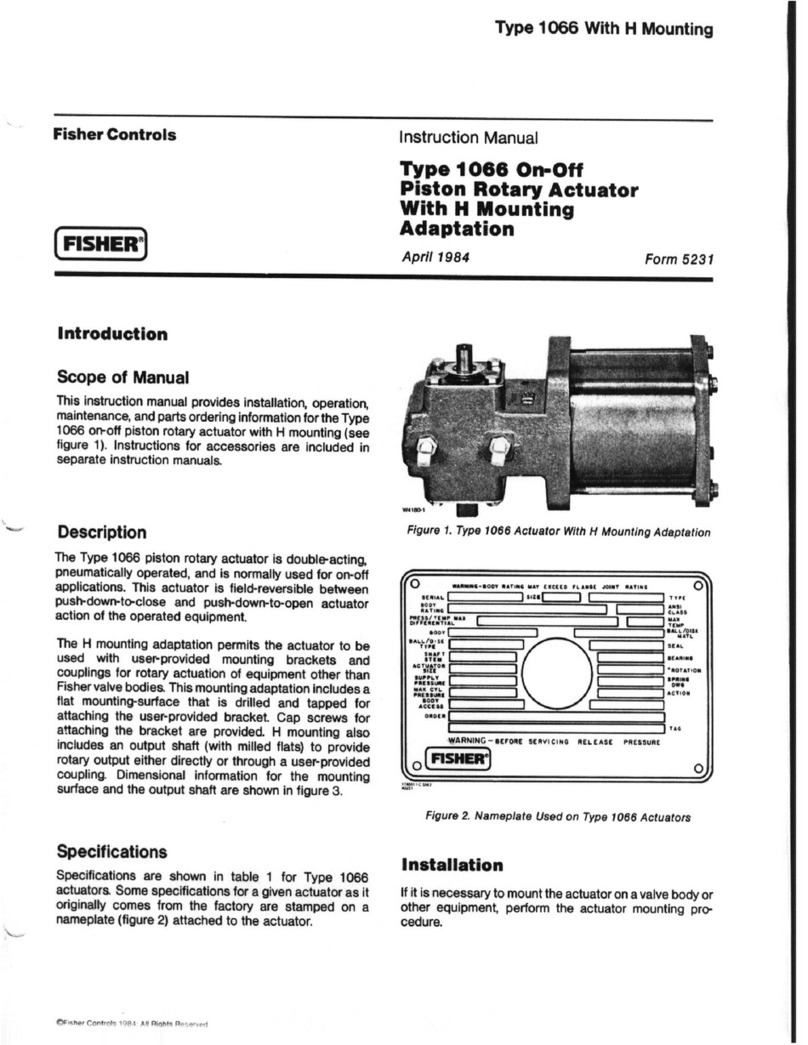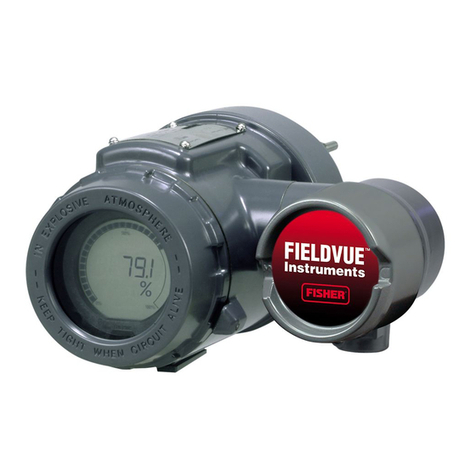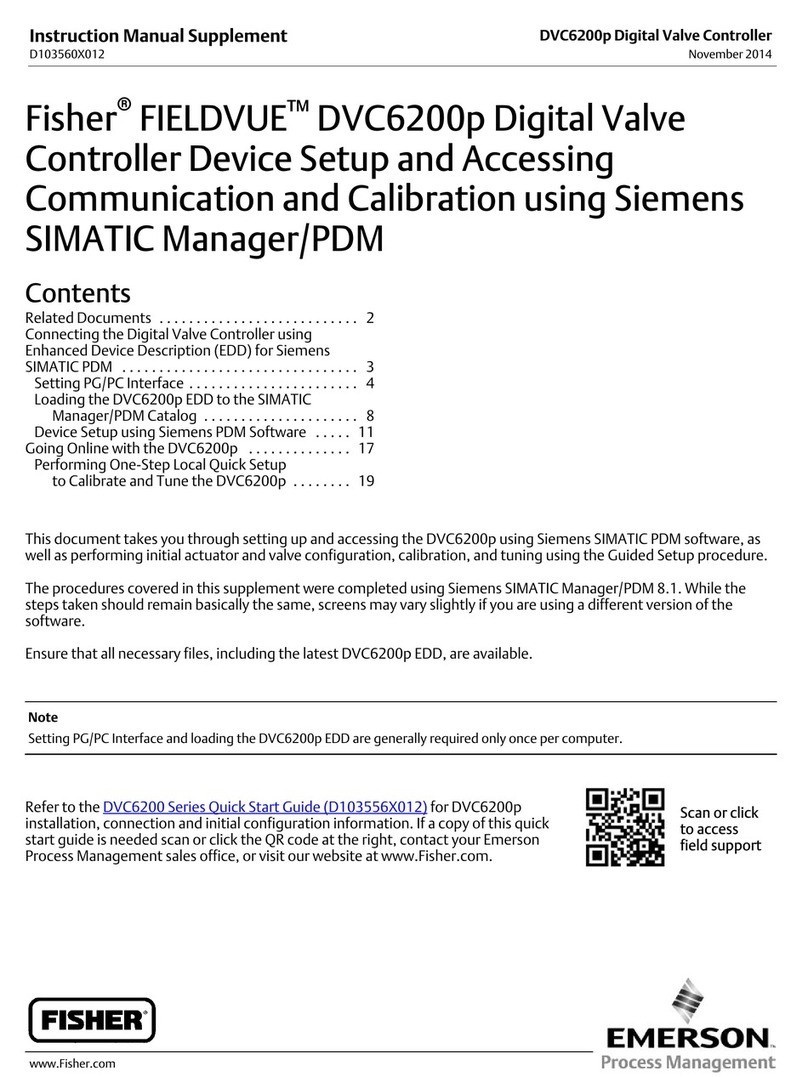
Type 656
4
a. The first four bolts tightened should be diametri-
cally opposed and 90 degrees apart. Tighten these
four bolts to 10 lbfSft (13 NSm).
b. Tighten the remaining bolts in a clockwise,
criss-cross pattern to 10 lbfSft (13 NSm).
c. Repeat this procedure by tightening four bolts,
diametrically opposed and 90 degrees apart, to a
torque of 20 lbfSft (27 NSm).
d. Tighten the remaining bolts in a clockwise,
criss-cross pattern to 20 lbfSft (27 NSm).
e. After the last bolt is tightened to 20 lbfSft (27
NSm), all of the bolts should be tightened again to
20 lbfSft (27 NSm) in a circular pattern around the
bolt circle. Once completed, no more tightening is
recommended.
8. If the actuator has been removed from its mount-
ing, position it on its mounting plate or bracket, and
secure with cap screws.
9. Attach the pressure pipe or tubing to the loading
pressure connection on top of the upper diaphragm
case.
10. Attach the actuator stem to the stem connector or
clevis and adjust the travel by using the appropriate
procedure below.
DFor Push-Down-to-Open applications:
1. Set the controlled element (valve plug, louver,
damper, etc.) in the closed position.
2. Turn the lower bearing seat (key 14) up toward the
spring case far enough to ensure that the actuator
stem is at the top of its stroke.
3. Make the actuator stem connection, making sure
that there is full engagement of the actuator stem
threads. Tighten slightly.
4. Apply loading pressure to the diaphragm case to
move the controlled element toward its wide open
position. Screw the controlled element linkage into the
actuator stem connection far enough to move the con-
trolled element toward its closed position 1/8 inch, and
tighten the stem connection securely. This adjustment
ensures that the controlled element will close before
the actuator stem travels to the top of its stroke. The
travel stops (key 7) in the lower diaphragm case en-
sure correct travel of the controlled element in the
open direction.
5. If travel starts at a lower or higher pressure than is
required for proper operation, turn the lower bearing
seat (key 14) up or down respectively, as described in
the
Adjustment
section.
DFor Push-Down-to-Close applications:
1. Set the controlled element (valve plug, louver,
damper, etc.) in the open position.
2. Turn the lower bearing seat (key 14) up toward the
spring case far enough to ensure that the actuator
stem is at the top of its stroke.
3. Tighten the actuator stem connection slightly, mak-
ing sure that there is full engagement of the actuator
stem threads.
4. Apply loading pressure to the diaphragm case and
observe the travel of the controlled element to make
sure that it closes completely. If the travel is not cor-
rect, it can be changed by screwing the controlled ele-
ment linkage in or out of the stem connection. When
the travel is set correctly, tighten the stem connection
securely, and lock the jam nuts (key 23).
5. If travel starts at a lower or higher pressure than is
required for proper operation, turn the lower bearing
seat in or out respectively, as described in the
Adjust-
ment
section.
Parts Ordering
When corresponding with your Fisher Controls sales
office or sales representative about this equipment,
refer to the serial number found on the actuator name-
plate.
Parts List
Key Description Part Number
1 Diaphragm Case, steel
Standard
Size 30 2J173828992
Size 40 2L441828992
Size 60 30A0055X012
For top-mounted handwheel
Size 30 2E792225062
Size 40 2E806325062
Size 60 2E847425062
2* Diaphragm
Size 30 2E791902202
Size 40 2E670002202
Size 60 2E859702022
3 Cap Screw, steel
Size 30 & 40 1E760432992
Size 60 1E775432982
4 Diaphragm Plate, cast iron
Size 30 2F649319042
Size 40 2V939919042
Size 60 20A1336X012
5 Lower Diaphragm Case, steel
Size 30 2E792225062
Size 40 2E806325062
Size 60 2E847425062
6 Actuator Spring, steel See following table
*Recommended spare parts
